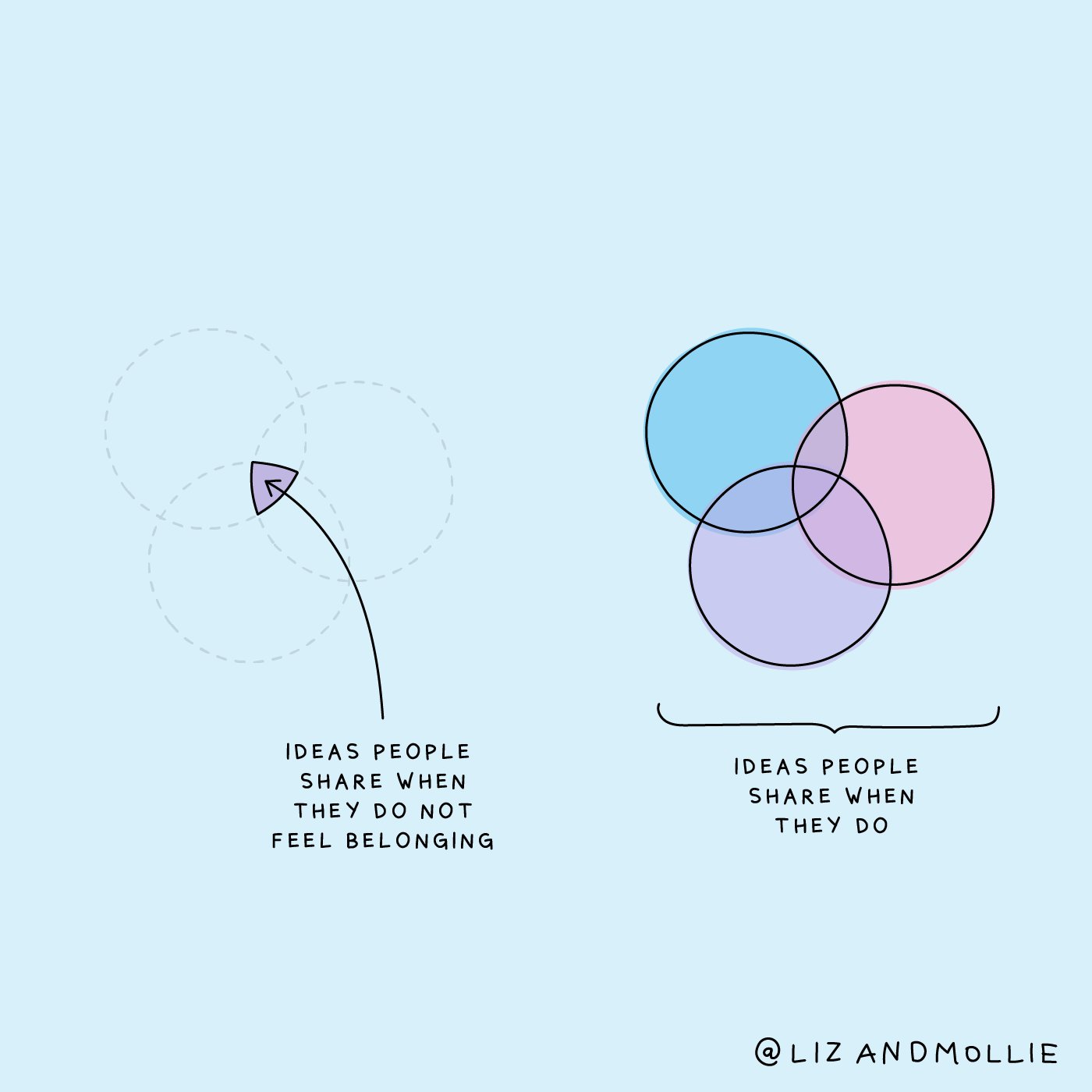Social belonging is a fundamental human need
Inclusion and belonging is about our relationship with others in a group: it is the sense of being accepted and included by those around you, it is having a voice, and that voice be heard.
Social belonging is a fundamental human need, and we all know how much it hurts to feel left out (remember when you were younger and wanted to hang out with your classmates, but some groups within the class were out of your league? No? Lucky you!): the sensation is akin to physical pain.
Why is this important at work?
Well, first of all because, for the biggest part of our adult life, we spend a significant amount of time with our coworkers, and spending most of our waking hours in a context where we feel like we do not belong is harmful to our happiness.

Secondly, when we feel excluded we tend to shut down and not speak up, while feeling like we do belong allows us to really contribute and engage.
So inclusion and belonging are good for business: they are at the foundation of innovation and improvement, and have a positive impact on productivity.
For us knowledge workers, belonging and inclusion at team level is pivotal
The team is where value is created in the most rich and sustainable way.
If the connection is strong at team level you can cope with the challenging and crappy moments at company level, and still be resourceful and resilient.
If the connection is poor at team level it doesn’t matter how great your employer is, your experience at work overall is gonna suffer.
Why am I focusing here on remote and hybrid set-ups?
First of all because at my current company they have become standard over the past three years, so it is what I can observe first hand more easily. The vast majority of the teams are now far more distributed than before:
- Some teams are entirely remote based.
- Other teams are composed of remote team members and team members who live close to one office… which is not necessarily the same office: it means that if everyone in the team decides to go to their ‘office of reference’ the same day, people end up in different places.
- Even when all team members live close to the same office, often part of the team is at the office and part is not, since everyone is entitled to work from home for a good part of the month.
Secondly, because they have their own set of challenges in respect to inclusion and belonging:
- Full remote set-up lacks physical proximity, that tends to facilitate the development of strong ties between people.
- Hybrid means people play in a playing field which is not level: some can leverage on the physical proximity, some cannot.
You may have noticed that at the end of the title of this blog post there is a question mark: it’s because I am still looking for answers!
I’ve started by asking my colleagues to share:
- What has been working well in terms of belonging and inclusion in their teams, so that we could embed those practices in our working style
- What has actively damaged that sense of belonging and inclusion, so that we can increase awareness and avoid the same missteps.
I’ll share their insights in the next post.
Read next:
- How to sustain Inclusion and Belonging in remote and hybrid teams? - Learnings from the trenches
- How to sustain Inclusion and Belonging in remote and hybrid teams? - Hybrid meetings
Photo by Tim Mossholder on Unsplash
